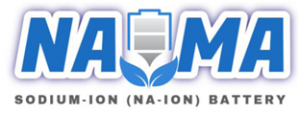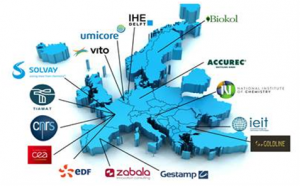European projects
NAIMA project
Na-Ion Materials for non-automotive Applications

Project : HORIZON 2020
Call : Building a Low-Carbon Resilient Future : Next-Generation Batteries
Topic : LC-BAT-2-2019 : Strengthening EU materials technologies for non-automotive battery storage (RIA)
After the success of NAIADES H2020 European project (01/2015-12/2018) where the first prototype of a sodium-ion battery (SIBs) have been achieved ( https://news.cnrs.fr/articles/a-battery-revolution-in-motion), the development of Na-ion batteries will be further extended through NAIMA project for a duration of three years starting to December 2019.
The goal of NAIMA project is to demonstrate the conception of new generation of high-competitive and safe Na-ion cells as one of the most robust and cost-effective alternatives to the current and future Li-based technologies. Several SIBs prototypes will be tested to provide solid evidences about the competitiveness of the technology in real Energy Storage Systems, ESS environments (renewable generation, industry and private household). IS2M will be involved in this project in task 2 aiming to develop novel hard carbon anodes with improved performances for Na-ion batteries. The work will be undertaken in close collaboration with CIRIMAT, Toulouse ; CEA-Grenoble, National Institute of Chemistry- Slovenia ; IHE Delft Institute-The Netherlands and Biokol Sverige-Sweden.
Coordinator :
TIAMAT, France (the start-up of French Electrochemical Energy Network, RS2E) : http://www.tiamat-energy.com/
Consortium : NAIMA gather a strong and complementary consortium, including 15 partners from 7 European countries including : 5 R&D organisation (CNRS, CEA, NIC, IHE, VITO), 6SMEs (TIAMAT, BIOKOL, IEIT, GOLDLINE, ACC, ZABALA) and 4 large companies (EDF, GESTAMP, SOLVAY, UMICORE).

Total budget : 8 million €
Project website : to be included
Contact IS2M :
Camélia Ghimbeu : camelia.ghimbeu@uha.fr
ITN project
PHOTO-EMULSION : Towards Next generation Eco-efficient PHOTO and EMULSION Polymerisations
The polymer industry is going through one of the most significant periods of change in its history. Driven by new environmental regulations, the development of eco-e cient processes and zero-VOC products has become an absolute necessity. In this eld, 2 technologies stand out : Polymerisation in dispersed media and Photopolymerisation. To maintain EU leadership in this sector, PHOTO-EMULSION aims at training a next- generation of 8 Early-Stage Researchers (ESRs) who can push towards new eco-friendly polymerisation processes. Our primary strength is a demanding technical knowledge base bringing together, for the rst time, all disciplines related to these 2 strategic elds. Secondly, we will broaden traditional doctoral training by targeting transferable and specialized skills sought after by the employers, and learned through innovative methods : tandem ESRs, distance language learning, ESR as itinerant science educator, online courses, ESR-led subproject, highly interactive meetings, and industrial secondments. In research, we will develop a “hybrid” next-generation technology based on thiol-ene photopolymerisation in dispersed media. Advanced manufacturing based on photoreactor promises a wave of high sulfur content dispersed products ( lms, nanoparticles, porous networks). Their outstanding properties open the door to applications responding to current Industrial needs such as non-leaching materials, O2 barrier and biobased waterborne coatings, biologically-active particles, hybrid nanosensors and monolithic chromatography column.
PHOTO-EMULSION is a EU-funded “Innovative Training Network” (ITN) project of the H2020 programme.
Led by IS2M (Dr. Abraham Chemtob), it involves a high-quality research network including 8 internationally reputed academic institutions, 4 leading companies and 2 non- pro t organisations. Balanced & EU-wide, its diversity expresses through the participation of 8 countries (Austria, France, Germany, Ireland, Poland, Slovenia, Sweden & Spain), 50 % female scientists-in-charge, and structures supporting gender equality.
Contacts at IS2M : abraham.chemtob@uha.fr
julien.poly@uha.fr
Titre : Recovery of olive oil by-products through bio/hydrochars production for agricultural soil fertilization and environment preservation
Ultrasensitive sensors for the detection of Lithium Ion Batteries fails
Lithium-ion batteries (LIBs) represent the largest share of the electrical battery storage of our modern society and are considered to be a valid technology during the next twenty years for plug-in hybrid applications and electric vehicles. One issue in conversion of chemical into electrical energy is that damages such as overcharging lead to fatal composition changes and leaks outside the battery. To respond to the massive societal increasing needs battery safety issues have to evolve to overcome these limitations.
NanoTRAACES aims to develop a novel combined microchip integrable into LIBs for the detection of electrolyte failures. A new concept of sensor based on real-time leakage detection with high sensitivity of chemical changes will be fabricated. A rapid detection of battery electrolyte damage will be achieved to prevent unexpected exothermal reactions. The sensor will also be versatile to implement the concept of online chemical surveillance onto new generations of batteries.
Picture credits : V.Guilly/CEA

